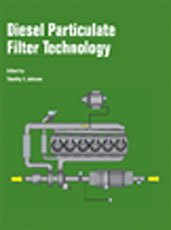Journal Article
A Next Generation Cordierite Diesel Particle Filter with Significantly Reduced Pressure Drop
2011-04-12
2011-01-0813
Diesel particle filters (DPF) have become a standard aftertreatment component for all current and future on-road diesel engines used in the US. In Europe the introduction of EUVI is expected to also result in the broad implementation of DPF's. The anticipated general trend in engine technology towards higher engine-out NOx/PM ratios results in a somewhat changing set of boundary conditions for the DPF predominantly enabling passive regeneration of the DPF. This enables the design of a novel filter concept optimized for low pressure drop, low thermal mass for optimized regeneration and fast heat-up of a downstream SCR system, therefore reducing CO₂ implications for the DPF operation. In this paper we will discuss results from a next-generation cordierite DPF designed to address these future needs.

